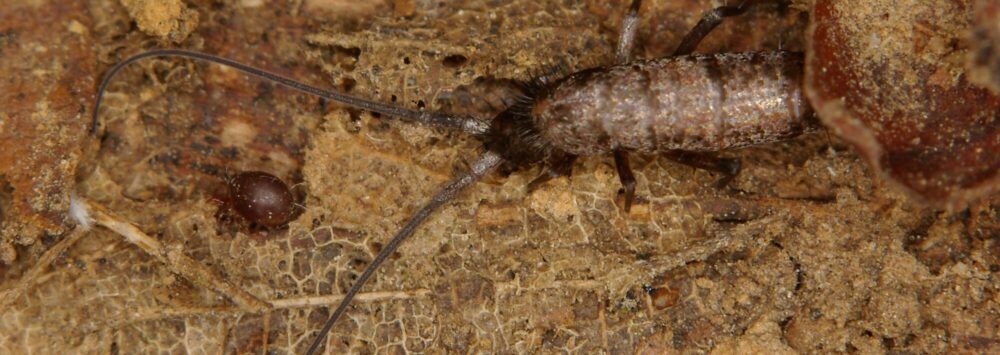The humus form type Moder develops on soils with low-to-very low base saturation and moderately-to-poorly decomposable litter. Moder humus forms also exist on soils with relatively high base saturation even if plants which contribute very poorly decomposable litter dominate, for example, dwarf shrub heather. The activity of anecic earthworms is strongly reduced compared to soils with Mull humus forms. Besides endogeic and epigeic earthworms, arthropods and microannelids predominate. In Moder humus forms, litter decomposition takes place almost exclusively in the organic surface layers, and only small amounts of litter are incorporated into the A horizon. Therefore, the A horizons of Moder are thinner, and the proportion of biogenic granular structures is lower compared to Mull humus forms. Production of soluble humic substances may lead to some bleaching of the A horizon. Ol horizons and Of horizons are always present, with the thickness of the Of horizon being >5 cm in most cases. The minimal mixing of organic matter into the mineral soil is indicated by an increasing thickness of the Oh horizon, with >5 mm in Typical Moder. Under the specific conditions of montane and alpine zones of the Limestone Alps, the Moder subtypes Tangel and Pechmoder are observed. Distinct features of a Moder are:
-
Ol horizon and Of horizon are present all year round;
-
Obh horizon is present, which is in parts very thin or patchy; and
-
a thin Ah horizon or Ee horizon has developed.
Subtypes
AMM Mull-like Moder
AMT Typical Moder
AMR Rhizo Moder
AMP Pechmoder
AMA Tangel
AMF Moist Moder
